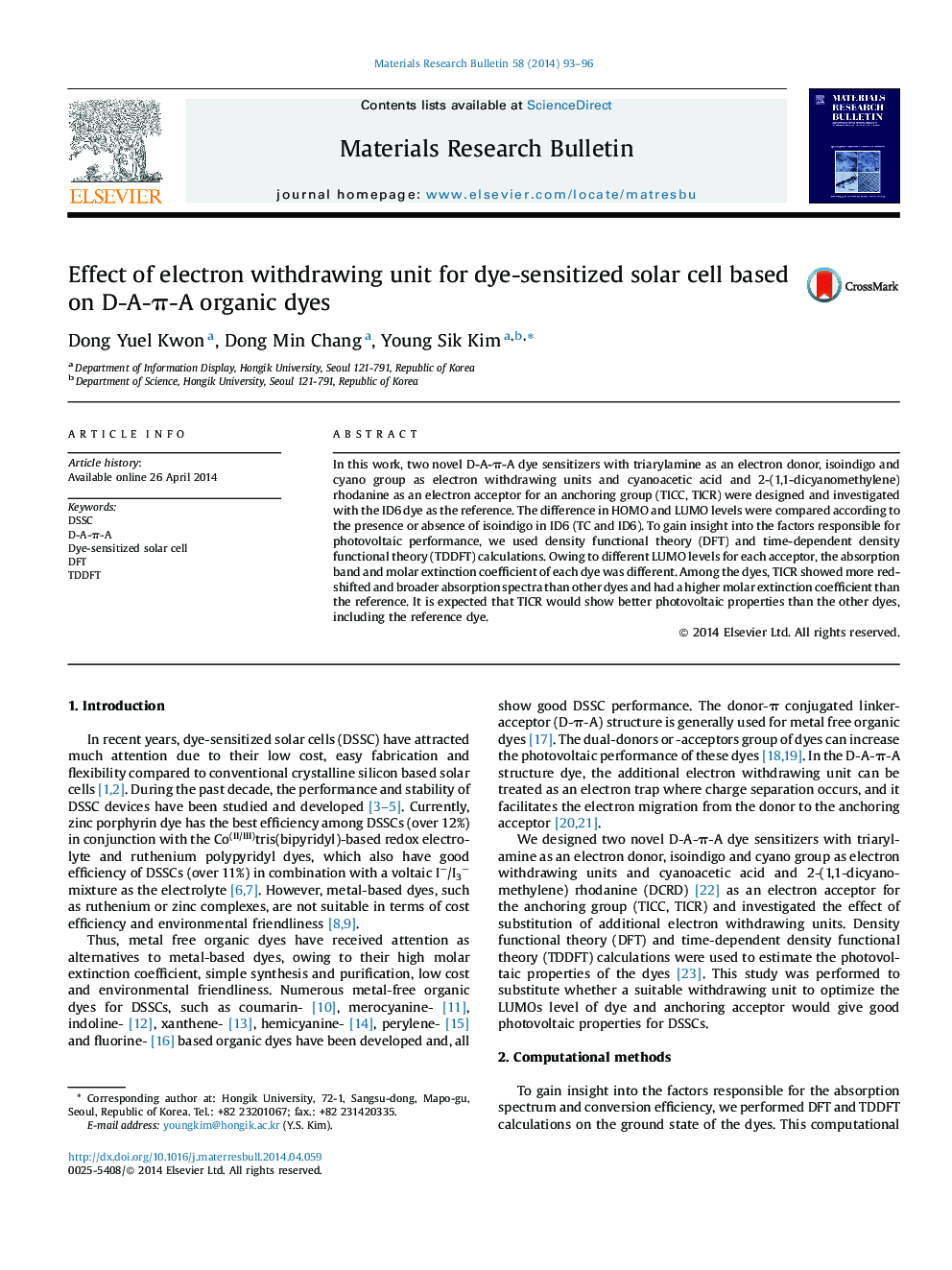| Article ID | Journal | Published Year | Pages | File Type |
|---|---|---|---|---|
| 1488311 | Materials Research Bulletin | 2014 | 4 Pages |
•To gain the red-shifted absorption spectra, withdrawing unit was substituted in dye.•By the introduction of additional withdrawing unit, LUMOs level of dye are decreased.•Decreasing LUMOs level of dye caused the red-shifted absorption spectra of dye.•Novel acceptor, DCRD, showed better photovoltaic properties than cyanoacetic acid.
In this work, two novel D-A-π-A dye sensitizers with triarylamine as an electron donor, isoindigo and cyano group as electron withdrawing units and cyanoacetic acid and 2-(1,1-dicyanomethylene) rhodanine as an electron acceptor for an anchoring group (TICC, TICR) were designed and investigated with the ID6 dye as the reference. The difference in HOMO and LUMO levels were compared according to the presence or absence of isoindigo in ID6 (TC and ID6). To gain insight into the factors responsible for photovoltaic performance, we used density functional theory (DFT) and time-dependent density functional theory (TDDFT) calculations. Owing to different LUMO levels for each acceptor, the absorption band and molar extinction coefficient of each dye was different. Among the dyes, TICR showed more red-shifted and broader absorption spectra than other dyes and had a higher molar extinction coefficient than the reference. It is expected that TICR would show better photovoltaic properties than the other dyes, including the reference dye.
Graphical abstractFigure optionsDownload full-size imageDownload as PowerPoint slide
